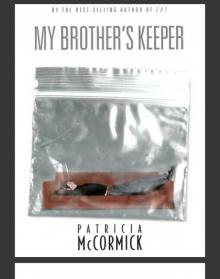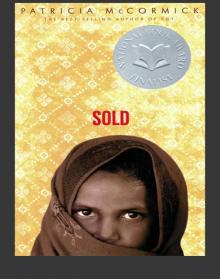- Home
- Patricia McCormick
The Plot to Kill Hitler Page 2
The Plot to Kill Hitler Read online
Page 2
THREE
BONHOEFFER SEALS HIS DESTINY
1918–27
When the war ended in 1918, Germany had been crushed. The shelves in Berlin shops were bare, and the proud German people were humiliated by the terms of surrender. Karl-Friedrich and Klaus finally returned home—exhausted and disillusioned.
Dietrich was still feeling lost in a family where his older brothers were the ones who were expected to do big things. He wasn’t the war hero Walter had been. He wasn’t a genius at physics like Karl-Friedrich, who was now back at Berlin University, where he was a star student. And he didn’t have the brilliant analytical mind that Klaus had begun to demonstrate at law school.
TREATY OF VERSAILLES
The terms of this treaty to end World War I had a devastating effect on the German economy and psyche. Germany was required to give up land they’d seized in Poland, France, Belgium, Denmark, Africa, and Asia. The treaty also required Germany to pay the victors for war damages they had suffered. The country’s gold, ships, lumber, coal, and other natural resources were seized to pay these war reparations. As a result, the German economy ground to a halt and many people lost their jobs. Most humiliating, the Germans had to accept complete and sole responsibility for the war. These terms embarrassed and isolated the once-proud nation and helped created the bitterness that led to Hitler’s rise to power.
Dietrich wanted to achieve something special all his own. Something that dealt with ideas more mysterious than isotopes and electrons. Issues more weighty than those in a legal brief. He knew what it was, but he was afraid his brothers would make fun of him.
Then a letter arrived inviting Dietrich to attend a prestigious music conservatory. For his parents it was welcome news: This could be Dietrich’s first step on the path to a career as a concert pianist. They invited a well-known pianist to their home to hear him play. Dietrich desperately wanted to please his parents, but he knew he wasn’t good enough—or determined enough—for a career in music. Their famous guest could tell, and so could his parents.
Finally, Dietrich confided in his mother. While he hated to disappoint her, he didn’t want to be a musician. He was only thirteen, but he had found his calling: He wanted to become a minister.
It was an odd choice. Even though the Bonhoeffers were Lutherans—they said grace at dinner and family prayers at night—they weren’t regular churchgoers. They were scientists and intellectuals. Men of reason, not religion. Dietrich’s father, a prominent psychiatrist in Berlin, was perhaps the most skeptical of the mystery of faith. “I understand nothing of that,” he once said. And he told Dietrich that he thought it was “a pity” that he would choose such a “quiet, uneventful . . . life.”1
Just as Dietrich had feared, his brothers teased him. They told him he’d regret a career that meant a “retreat”2 from the big issues of the day. A retreat? A life of faith was where he could really make a difference, he argued. The church was the one force that could prevent evil and truly help when people were in trouble. His brothers were unconvinced. The church, they told him, was a petty, feeble, bourgeois institution. Well then, Dietrich told them, he would change it!
Ever since Walter’s death, Dietrich had been reading the Bible and other difficult philosophical books on his own. He had taken confirmation classes and started attending church regularly. He was so sure of his destiny that by age fifteen, he had started signing his name “Dietrich Bonhoeffer, theologian.”3
Dietrich Bonhoeffer, age twenty-two, 1928
Only his mother seemed to appreciate his yearning for an explanation for the big questions in life. Although her husband and sons were intellectuals and scientists, there were a number of prominent theologians and philosophers on her side of the family. And so she went to church with Dietrich to try to understand why he felt so attracted to the ministry. As soon as she saw how devout he was, she knew that a life of faith was his destiny.
When he was confirmed she gave him a special gift: the Bible his brother Walter had been holding on his deathbed. Dietrich would carry it with him from that day forward, keeping it in his hands as he traveled the world for the next twenty years—ultimately bringing it with him to his cell in a Gestapo prison.
Dietrich Bonhoeffer would go on to become one of the most famous theologians in the world and he would write many books that would move people, even today, to fight for social justice. But he never explained why he became a minister. And he would always say that the roots of a person’s innermost vocation should be private.
Perhaps his choice of a “quiet, uneventful” path was a way to set himself apart from the busy and talented older brothers who had always overshadowed him. Much later, Eberhard Bethge, his best friend, would think back to all the times that Dietrich had wandered off from his brothers and sisters to be alone with his thoughts. “It might be said that because he was lonely, he became a theologian,” Bethge wrote, “and because he became a theologian, he was lonely.”4
FOUR
LEAVING HOME FOR THE FIRST TIME
1923
When seventeen-year-old Dietrich Bonhoeffer stepped off the train at the pretty university town of Tubingen in the southern part of Germany, he was carrying his books, his pens and paper, his tobacco, and a hefty allowance. He was there to study, but he had brought along all the comforts of home to his apartment in this new city.
Finally, he would dive into the great philosophical mysteries with other students who shared his interests. Finally, he would meet learned men who would help him grapple with the big thoughts that had been spinning through his mind since he was a little boy. But he was also there to have some fun.
At Tubingen, he joined a fraternity known as the Hedgehogs. At the Hedgehog lodge, he quickly became well known for his snappy wardrobe. Dietrich Bonhoeffer, son of an aristocratic, well-to-do family, loved clothes. Silk ties. Handsome tweed jackets. And handmade shoes. He may have wanted to be a theologian, but he would never dress like a monk.
He also reveled in the heady, scholarly atmosphere at Tubingen. He sat up late into the night debating the fine points of philosophy with his fellow classmates, and he impressed his professors with provocative questions. He challenged his professors relentlessly; some of his fellow students even saw him as arrogant. But no one doubted his intellect.
For his eighteenth birthday he asked for a trip to Rome. His older brother Klaus, who had just passed the bar exam, would be in Italy; perhaps Dietrich could tag along. His parents agreed, setting the stage for a trip that would change Bonhoeffer’s thinking forever.
When Dietrich and Klaus boarded the train to Italy, they left behind an economy in tatters. Unemployment was rampant, and the German currency, the mark, was nearly worthless as the government struggled to pay back its war debt. A young rabble-rouser named Adolf Hitler took advantage of the turmoil and tried to overthrow the government. He was jailed the same year Bonhoeffer left for Rome. While Dietrich Bonhoeffer stood in a cathedral pondering the ways that faith can unite people, Adolf Hitler toiled in a jail cell, writing his manifesto of hate, Mein Kampf.
FIVE
THE TRIP THAT CHANGED EVERYTHING
1924
When Dietrich Bonhoeffer stepped inside St. Peter’s Basilica in Rome on Easter Sunday, he was practically lost in a purple fog of frankincense. The altar was dripping with lace, the ceilings were encrusted with gold, and guards in garish orange-and-blue-striped costumes stood sentry in the corners. Bonhoeffer, accustomed to the simple wooden churches of Germany, was appalled.
At that time, it was very unusual for a Protestant to visit a Catholic church. Relations between the two faiths were distant, even suspicious. And Bonhoeffer was a member of the Lutheran Church—the first church to break away from Rome, in part because of the kind of opulence on display at St. Peter’s.
He was about to leave when a young woman next to him offered to share her hymnal. He was so busy following the strange Latin text that he didn’t take his eyes off the hymnal—until, as he put it,
the “tender and melodious”1 call and response of the congregation caused him to look around. He was stunned. He saw Italians, Russians, Greeks, French, and Britons all lifting their voices together. He saw a throng of seminarians, monks, and priests of every skin color imaginable. Suddenly, his own church, which was almost synonymous with being German, seemed small, provincial, and narrow-minded.
He scribbled something in his diary: “universality of the church.”2 These words would form the basis for a radical new idea of what a church could be. And it would be a belief that would propel him, years later, when Hitler was on the march, to turn to members of the clergy all across Europe and beg for help.
SIX
THE MEN WHO WOULD CHANGE BONHOEFFER’S FATE
1926
The Bonhoeffers’ large, gracious Berlin home was adorned in garlands as men in evening attire and ladies in ball gowns floated across the parlor floor to the lilting strains of a Schubert waltz. A grand buffet had been laid, and outside a horse-drawn coach decked in white silk waited by the garden door.
It was Sabine’s wedding day.
The groom, Gerhard Leibholz, had been a regular visitor at the Bonhoeffer home. A doctoral student in legal philosophy, “Gert” was beloved by the whole family, especially by Karl Bonhoeffer, who said Gert was his favorite of all the boys who called at their home.
As maids bustled around the parlor offering champagne, Dietrich stepped outside for a moment. He looked in through the garden windows at his family. His oldest sister, Ursula, had already gotten married to Rüdiger Schleicher, a lawyer. And his sister Christel had married her former schoolmate, Hans von Dohnanyi, a government lawyer. Now Sabine had found someone.
As he looked on at the wedding celebration, Dietrich Bonhoeffer again found himself alone. Sabine had been his best friend. Now she had a new mate, while he was preparing for the solitary life of a scholar.
But it was through Sabine’s marriage to Gert that Bonhoeffer would eventually face a crisis of conscience that would upend that quiet, uneventful life.
Gerhard Leibholz had been baptized as a Lutheran, but his father was a Jew. And even though his father didn’t practice, his grandparents did. Still, Gert’s religion was a nonissue in 1926—especially at the Bonhoeffer home. No one in the Bonhoeffer family had ever married a Jew, but many of their friends in the progressive university neighborhood where they lived were Jews. And many of Karl and Paula Bonhoeffer’s friends were Jews who held top positions in academia, commerce, and the arts.
As Dietrich Bonhoeffer watched his family celebrate this happy day, he had no way of knowing the dramatic roles that Gert and his other brothers-in-law would play in his future. It was through Gert that Dietrich would first feel the sting of the Nazis’ hatred of the Jews. And it would be through his other brothers-in-law, Hans and Rüdiger, that he would be drawn into the conspiracy to assassinate Hitler.
Dietrich Bonhoeffer with his twin sister, Sabine, 1939
SEVEN
A NEW IDEA OF WHAT A CHURCH COULD BE
1926–28
The doorbell rang, and the parlor maid at the Bonhoeffer home hurried to answer it before it rang a second time. “No visitors today,” she whispered, closing the door as quietly as she could. The sound probably didn’t travel all the way to the third-floor study, but she didn’t want to do anything to disturb Dietrich, who sat there writing.
He was living at home again, studying at Berlin University. He was just twenty, but he was writing his dissertation at the same time as he took his regular course load—a demanding course of study for anyone, let alone someone so young. He wrote every day after going for a swim, working on a thesis that was both unconventional and, in the view of some of his teachers, naïve.
As he worked on his dissertation, he turned back again and again to his experience at St. Peter’s Basilica on Easter Sunday. He drew heavily on the images from that morning to form his idea of a universal church—a church that could bridge all the differences among human beings. His Lutheran professors worried that he was too enamored of the Catholic Church and demanded that he defend this strange idea.
His dissertation, “Sanctorum Communio (Communion of Saints),” was a 380-page paper in which Bonhoeffer insisted that the church wasn’t a historical institution; it was a living community that could transcend national, ethnic, class, and even religious boundaries. The “church” was not a building or an organization; it was a force for good, alive all around the world. The church should not be a remote, authoritative institution, he argued. It should be deeply and directly involved in the problems facing ordinary people.
In the end, his teachers were won over in spite of their doubts. He had written a trailblazing piece of theology, something radical and wholly original. He graduated summa cum laude.
But the idea of a church as a force for good wasn’t just an academic idea for Bonhoeffer. He believed in this idea, heart and soul. And it was this belief in the church as a moral authority greater than any government that would put him on a collision course with Adolf Hitler.
EIGHT
FROM FAITH TO ACTION
1928
Dietrich Bonhoeffer, in a straw hat and linen suit, sat at a table in a sun-splashed Barcelona plaza drinking espresso. He marveled at the air, with its faint perfume of almonds, and at the amazing mix of people passing by. Rich, working-class, poor—they all mingled together, strolling leisurely under the avenue’s palm trees.
It was a far cry from Berlin, with its chilly climate and strictly defined social order. And Dietrich Bonhoeffer himself was a long way from his old life in the stuffy halls of academia. After graduation, his father and his older brothers had encouraged him to go further in his studies. It would be a waste of his intellect to become a lowly pastor, they said.
But Bonhoeffer wanted to take action on his belief that the church should be directly involved in the lives of ordinary people. And since he was still too young to have his own parish, he’d taken a job as an assistant minister at a church for Germans living in Barcelona. He would bring his new ideas to his first parish assignment.
The congregation in Barcelona, however, was small and old-fashioned. Far from their homes in Germany, the parishioners clung to the old customs they’d left behind. They weren’t all that interested in the energetic young assistant pastor with big plans for a new kind of church.
Bonhoeffer couldn’t convince the pastor at the parish to try any of his ideas. He had a hard time finding people who were interested in the intellectually challenging conversations he loved. And the few times he was allowed to preach, his lofty sermons flew over the heads of the congregants. He lived in a ramshackle boardinghouse, alone in this foreign, friendless city.
Finally, he convinced the pastor to let him at least teach Sunday school.
The first week only one girl showed up. After that, Bonhoeffer went door to door visiting the homes of families in the parish, encouraging them to send their children to Sunday school. He was stunned by the poverty and hardship he saw—and moved by how much the parents sacrificed for their children.
Attendance grew at Sunday school, in part because the children were fascinated with the young, blond assistant pastor—and his funny Panama hat. And his linen suits. And the spiffy tennis whites he wore to play at the German tennis club. But he loved working with young people, especially the “lazybones, good-for-nothings, and early bloomers.”1 He had found his calling—and would find he always preferred the rough and tumble of working with underprivileged children to the pristine halls of academia.
Eventually, Bonhoeffer adopted the local customs, writing in cafés and having dinner at ten p.m. He continued his philosophical musings and wrote further about his idea of the “living church.” But he was most excited about a plan that would take him even farther from his proper German roots. He put some money aside for a trip to India, where he hoped to study with Gandhi—and talk with the great man himself about how to put faith into action.
Back home, mea
nwhile, Germany had descended into further turmoil.
There were endless squabbles in Parliament, and many Germans wanted to return to a monarchy. Bitter and humiliated by the financial and emotional punishment meted out by the Treaty of Versailles, they longed for the glory of days gone by. And they yearned for a strong, decisive leader who could lift them out of this national malaise.
Eventually that man would emerge: His name was Adolf Hitler.
NINE
GRAPPLING WITH THE EXISTENCE OF GOD
1929
A wet, slushy snow was falling as Dietrich Bonhoeffer arrived in Berlin. After months of sunny weather and outdoor dining in Barcelona, Germany seemed cold and dreary. And classes at Berlin University, where Bonhoeffer had enrolled in post-graduate studies, were dull. Worse than that, they started early in the morning. It was a tough transition from the languid life he’d enjoyed in Barcelona.
The one bright spot was a witty theology student named Franz Hildebrandt. The two young men had met at Tubingen and argued ceaselessly over the fine points of philosophy. Now that they were reunited, they griped about lectures that made them yawn and the doldrums of Berlin in winter.
They started off as classroom rivals, often taking opposite sides of an argument. Bonhoeffer could be quite stubborn. But Hildebrandt had a way of poking fun at him and at himself. After one debate where Bonhoeffer triumphed, Hildebrandt gave him a book he inscribed “to (my) ancient foe.”
Over time, Hildebrandt would become Dietrich Bonhoeffer’s closest colleague. He was Bonhoeffer’s first real friend outside the family. And he was Jewish.

 Never Fall Down
Never Fall Down Cut
Cut The Plot to Kill Hitler
The Plot to Kill Hitler My Brother's Keeper
My Brother's Keeper Purple Heart
Purple Heart Sold
Sold Never Fall Down: A Novel
Never Fall Down: A Novel